6 Minutes
Discovery and naming of a 108-million-year-old pachycephalosaur
In the eastern Gobi Desert of Mongolia, a remarkably complete fossil has revealed the oldest known dome-headed dinosaur to date. Excavated from the Khuren Dukh site in the Eastern Gobi Basin, the specimen dates to roughly 108 million years ago during the Early Cretaceous. The new species has been named Zavacephale rinpoche, where "zava" (Tibetan) means "root" or "origin," "cephal" derives from the Latin for "head," and "rinpoche" means "precious one," a nod to the jewel-like appearance of the domed skull that was found protruding from a cliff.
Z. rinpoche is notable both for its age and its exceptional preservation. The fossil—recovered by Tsogtbaatar Chinzorig of the Mongolian Academy of Sciences and described in Nature—represents the most skeletally complete pachycephalosaur yet discovered and pushes the group’s fossil record back by about 15 million years. "Pachycephalosaurs are iconic dinosaurs, but they’re also rare and mysterious," said Lindsay Zanno, associate research professor at North Carolina State University and corresponding author. "This specimen fills critical gaps in the evolutionary history of dome-headed dinosaurs."
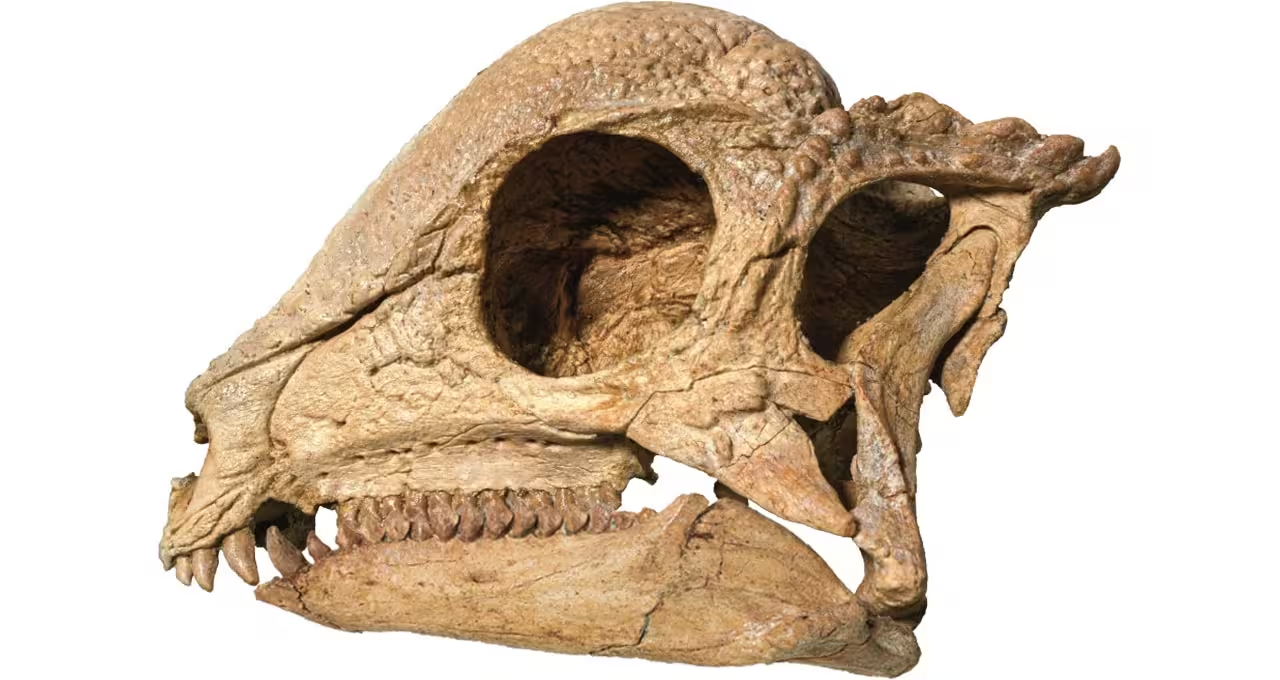
Z. rinpoche skull. Credit: Tsogtbaatar Chinzorig
Anatomy, size and life stage: a juvenile with a full dome
The preserved skeleton is striking because, although the animal was not fully grown, it already had a fully formed cranial dome. Limb elements and a complete skull make it possible to link dome morphology directly to growth stage—something paleontologists have been unable to do for most pachycephalosaurs because their remains are typically fragmentary isolated skulls.
By preparing a thin section of a lower leg bone and counting growth lines—similar to tree rings—the team determined the specimen was still a juvenile at death, despite the adult-like dome. This observation bears directly on long-standing debates about whether differences among pachycephalosaur skulls reflect distinct species or simply different ontogenetic (growth) stages.
"Z. rinpoche is an important specimen for understanding the cranial dome development of pachycephalosaurs," Chinzorig explains. "It shows that a substantial dome could be present well before full skeletal maturity, and that ornamentation continued to change with age."
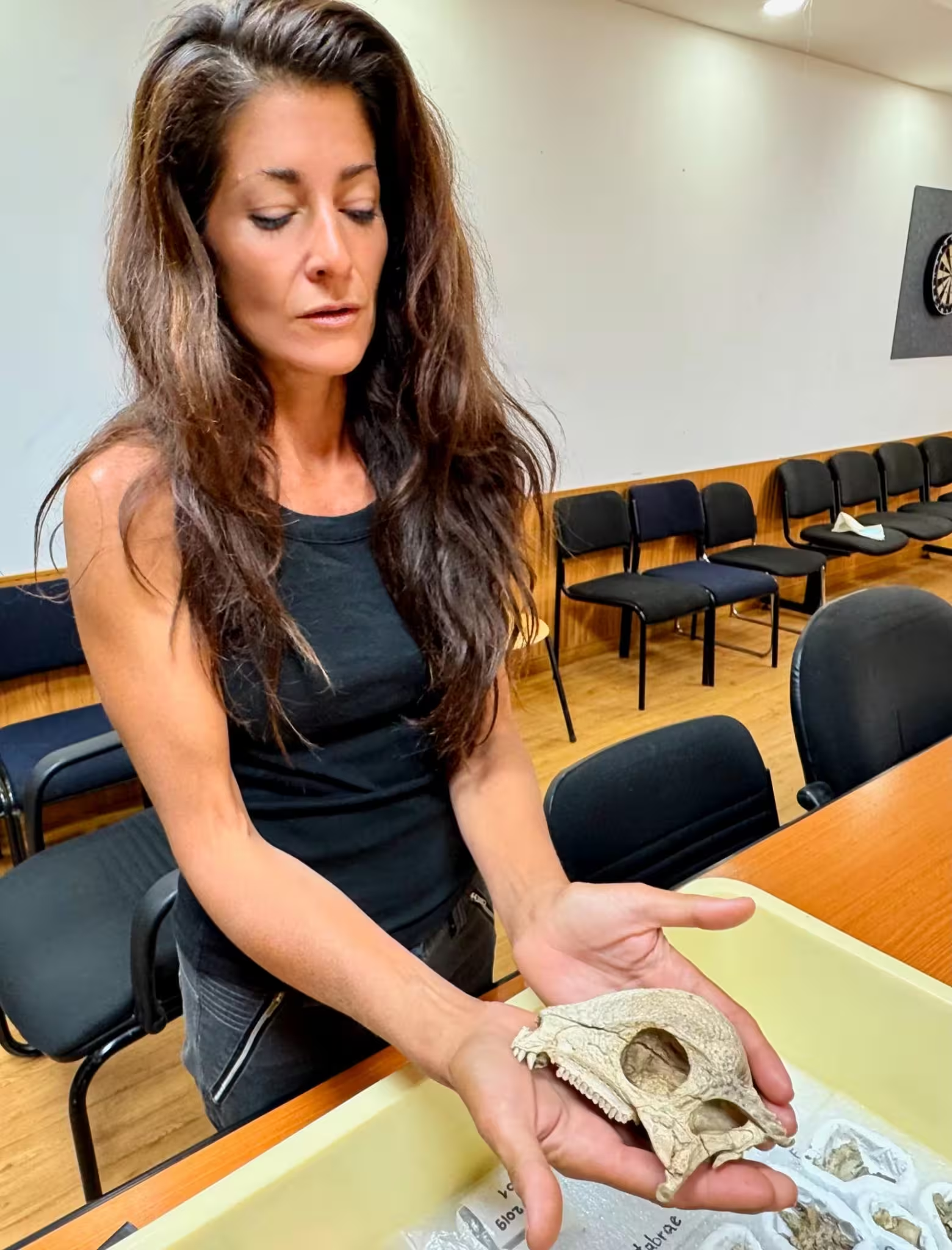
Paleontologist Lindsay Zanno holds the skull of Zavacephale rinpoche. Credit: Alfio Alessandro Chiarenza
Body plan, diet and preserved features
Pachycephalosaurs were herbivores. Adult members of related species could reach about 4.3 meters (14 feet) in length and weigh several hundred kilograms, but Z. rinpoche itself was small—about one meter (roughly three feet) long at death. The specimen also preserves hand bones, stomach stones (gastroliths), and an articulated tail with evidence for covered tendons. These elements provide fresh evidence about feeding, locomotion, and overall body plan.
The presence of gastroliths supports the interpretation that pachycephalosaurs used stomach stones to assist in grinding plant material, compensating for relatively simple dentition. Hand and limb anatomy from Z. rinpoche will help researchers refine digital reconstructions and biomechanical models of how these animals moved and manipulated objects.
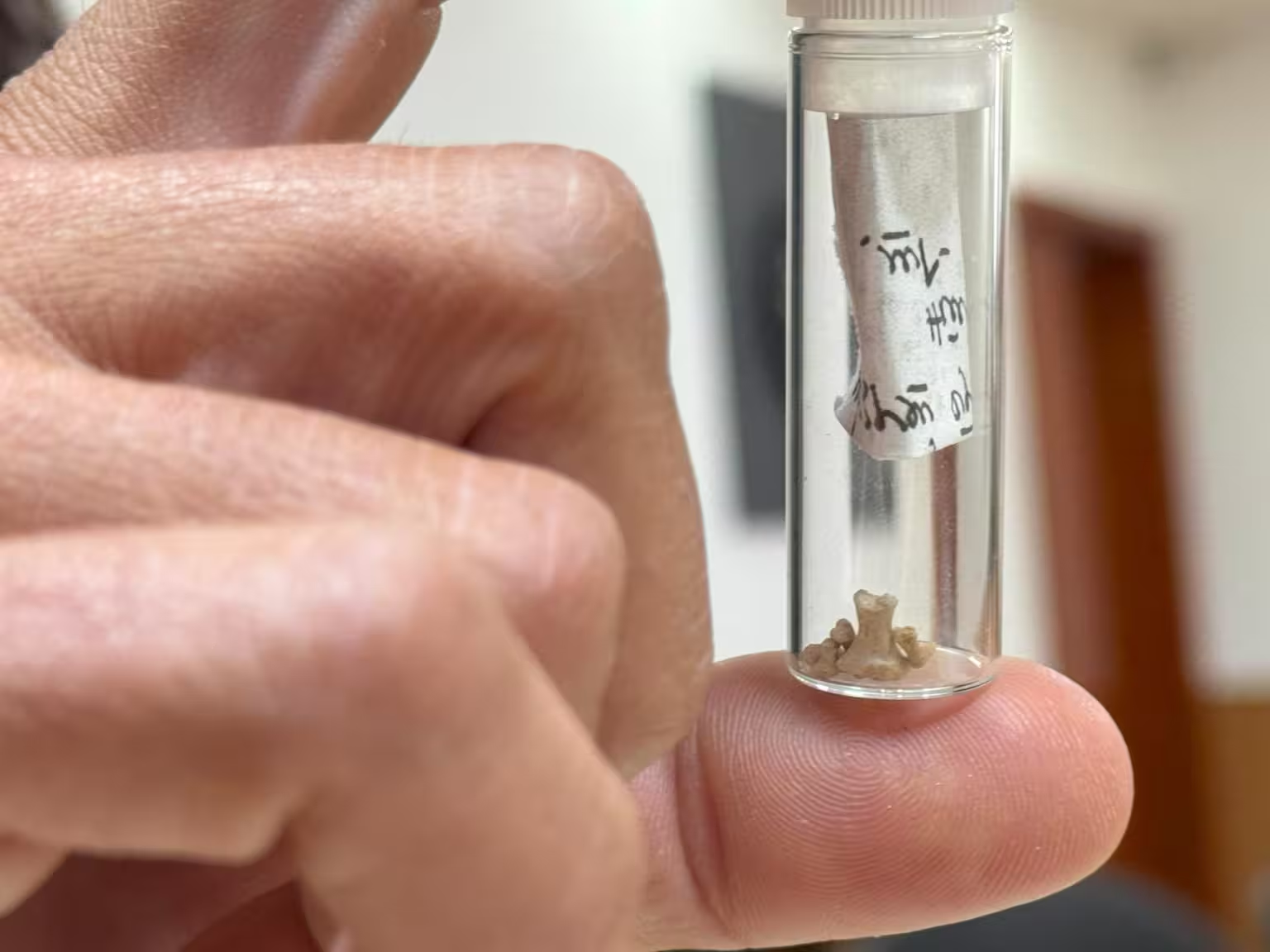
Z. rinpoche hand bones. Credit: Alfio Alessandro Chiarenza
Implications for behavior: headbutting, signaling and social life
Dome-headed pachycephalosaurs are often depicted in museum displays and paleoart as engaging in head-to-head combat or ritualized butting, and this new juvenile specimen informs that interpretation. The consensus among many paleontologists is that the dome primarily served socio-sexual functions—visual signaling and intraspecific competition—rather than defense or thermoregulation.
"The domes wouldn’t have helped against predators or for temperature regulation, so they were most likely for showing off and competing for mates," Zanno said. The fact that juveniles like Z. rinpoche already developed a dome suggests that social behaviors related to display and practice for adult interactions may have begun early in life. "If you need to headbutt yourself into a relationship, it’s a good idea to start rehearsing early," she added.
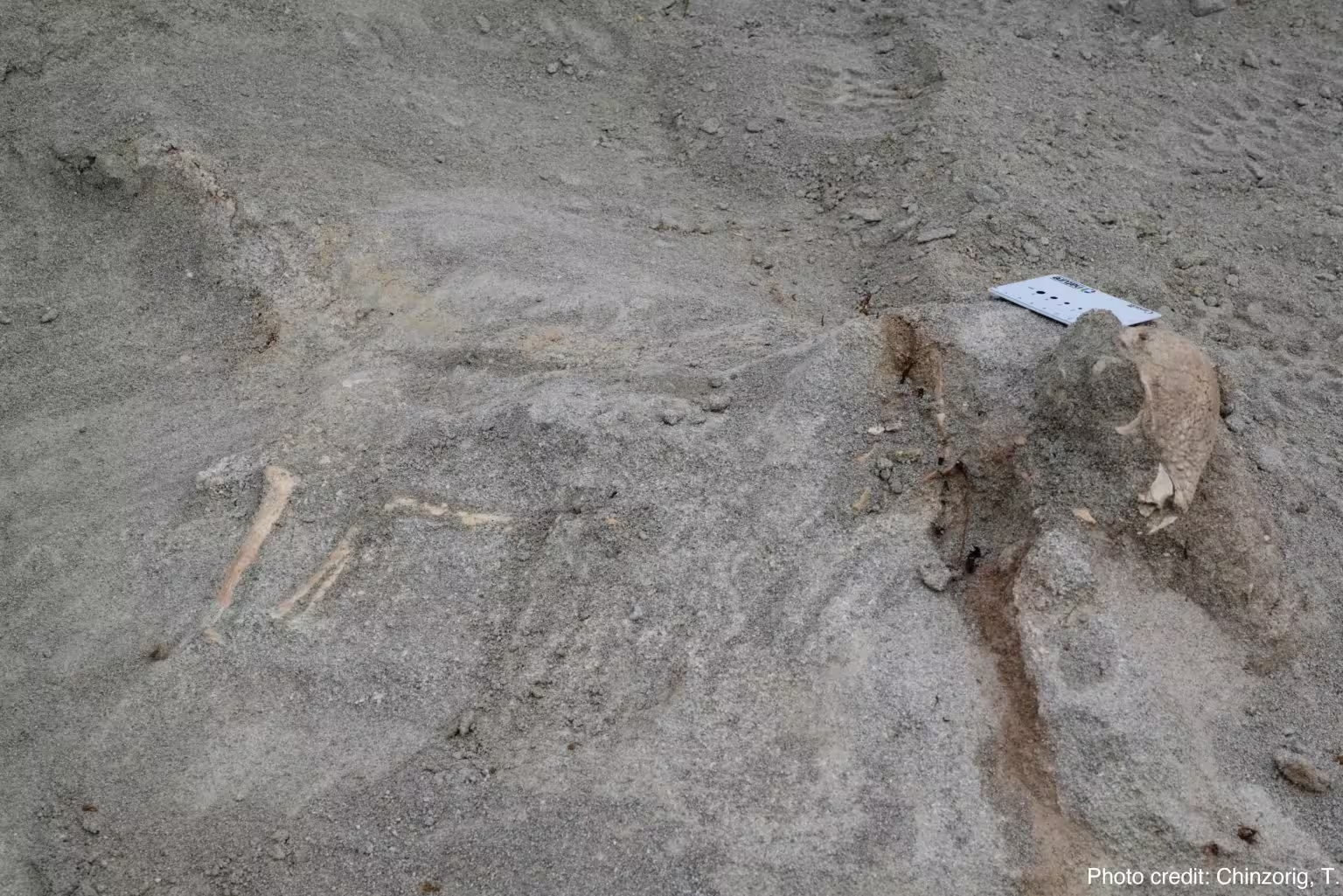
Z. rinpoche at time of discovery. Credit: Tsogtbaatar Chinzorig
Scientific background and context
Pachycephalosauria is a clade of ornithischian (bird-hipped) dinosaurs recognized primarily by their thickened cranial roof—often elaborated as domes, bosses, or spikes. Fossil occurrences are sparse and largely concentrated in the Late Cretaceous, notably in North America and Asia. This scarcity, combined with fragmentary remains, has hindered robust phylogenetic placement and ontogenetic studies. By extending the group’s record into the Early Cretaceous, Zavacephale rinpoche changes the timeline for early pachycephalosaur evolution and suggests a longer, earlier history for dome development than previously appreciated.
The Khuren Dukh locality preserves sediments interpreted as a valley landscape with lakes and bordering cliffs and escarpments during the Early Cretaceous. Such environments could have supported a diverse herbivore community, providing ecological context for how pachycephalosaurs fit into contemporary ecosystems.
Future research and technologies
The discovery opens several research avenues. High-resolution CT scanning can non-destructively analyze internal dome structure and sinus architecture; histological sampling can refine growth curves across individuals and taxa; and new phylogenetic analyses that incorporate Z. rinpoche’s postcranial elements will test hypotheses about early pachycephalosaur relationships.
Detailed biomechanical modeling using the new hand and tail data can revise locomotor reconstructions and estimates of maneuverability during display behaviors. In addition, targeted fieldwork in earlier Cretaceous deposits across Asia may further close the temporal gap in the pachycephalosaur fossil record.
Expert Insight
Dr. Amelia Rivers, vertebrate paleobiologist at the Institute for Paleoscience, commented: "Zavacephale rinpoche is a game-changer. Finding a juvenile with a mature-looking dome forces us to rethink how and when these structures developed, and what selective pressures drove that development. This specimen gives us a rare, holistic view of anatomy—skull, limbs, tail and gastroliths—in one animal, and it will be a keystone for future studies that combine histology, functional morphology and paleoecology."
Conclusion
Zavacephale rinpoche is a landmark discovery for dinosaur paleontology: the oldest definitive pachycephalosaur known, it pushes the clade’s fossil record back by roughly 15 million years and provides the most complete anatomical dataset for the group to date. By linking dome morphology to growth stage and supplying previously missing postcranial details, Z. rinpoche will reshape interpretations of pachycephalosaur biology, behavior, and evolution. Continued fieldwork and modern imaging and histological techniques promise to further illuminate the life history of these distinctive, dome-headed herbivores.
Source: scitechdaily

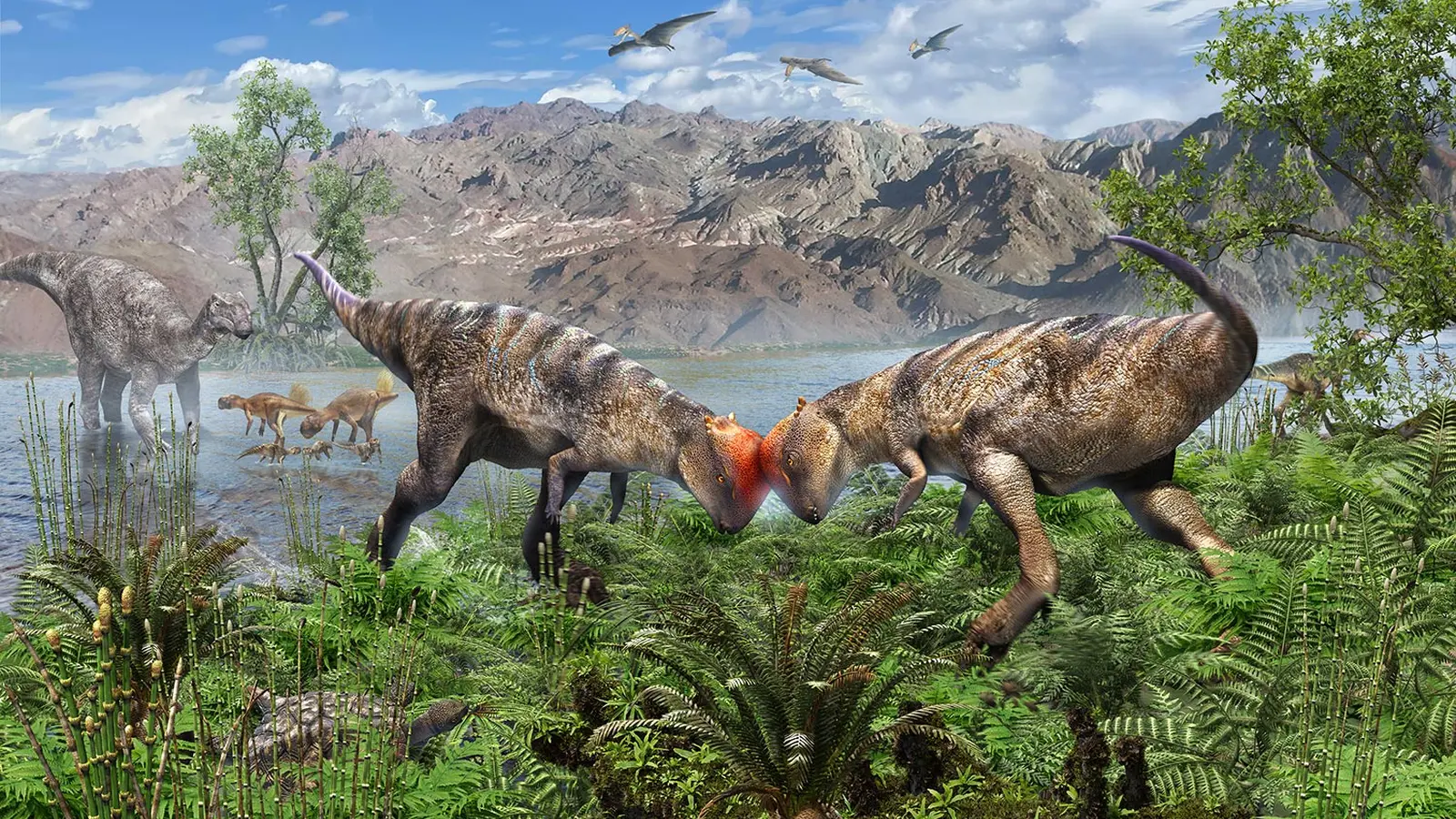
Leave a Comment